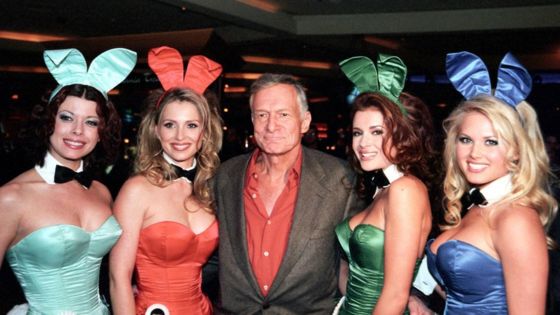
Hugh Hefner, the founder of Playboy magazine, has died aged 91 after a lifetime of selling not just magazines but a fantastical lifestyle. What did his sexual revolution mean for women?
Much of the press coverage of Hefner`s death has focused on the two sides to his legacy, pitting sleaziness against the way he opened American sexual attitudes.
The feminist Camille Paglia called him "one of the principal architects of the social revolution". Playboy was, after all, first published in 1953. This was a time when US states could ban contraceptives, and well before the so-called lads` mags of the 1990s and the pornography that is widely available online today. Hefner said in 1992 that he was proud he had "changed attitudes toward sex".
But some feminists argue there is a third part to Hefner`s legacy: that he built his revolution through images of women`s bodies.
Women`s activist Kellie Turtle told the BBC: "He was obviously very clear on what he thought he was representing with a sexual revolution and at times Playboy did live up to that."
But she says the women in the magazines and the Playboy Bunnies in the clubs were "objects rather than participants in their own sexuality".
In fact rather than a revolution, she sees Playboy as a backlash against women`s increased power and visibility in society.
"It was about putting women back in their place, which was as objects for male desire," she says.
"It sent that message back to women that you don`t really have influence and your place is to look attractive.
"For women who want to do that kind of work that`s a great opportunity but I do take issue with the way his model is set up around the male gaze.
"There are so many other ways that women are seeking their own sexual self-actualisation that don`t rely on a man surrounded by young beautiful women."
When feminist Gloria Steinem went undercover as a Playboy Bunny in the 1960s, she found the other women working there to be uneducated and bound by stringent rules regarding appearance.
Ms Steinem produced a falsified CV but it was brushed aside by a woman who told her: "We don`t like our girls to have any background, we just want you to fit the bunny image." She revealed that women would have their pay docked if they failed to show up to the make-up room on time, if their underwear was showing, or if they ate while on duty.
Later, she said: "I think Hefner himself wants to go down in history as a person of sophistication and glamour. But the last person I would want to go down in history as is Hugh Hefner."
Hefner lived with many women at the same time in what became known as the Playboy mansion - the site of lavish parties.
The women had a strict lifestyle, including a 21:00 curfew and pre-bed routines where the women living there had to change into pyjamas and, a former so-called Playmate wrote in a book, have sex with Hefner.
Many women who staffed the clubs and lived in the Playboy mansion have paid tribute to Hefner.
Meanwhile, Kim Kardashian, a former cover star, tweetedthat she was honoured to have been part of Playboy, and Pamela Anderson posted a video of herself crying to Instagram.
The life Hefner led was undoubtedly many men`s fantasy, and in the world of magazines, aspiration sells.
But writing in the feminist magazine Ms six years ago, Gail Dines said: "For women, there is nothing nostalgic about sexism. As feminists continue to fight for equality, men like Hugh Hefner who continue to exploit women should not be held up as `visionary`.
"This is an insult to women everywhere.


0 comments:
Post a Comment